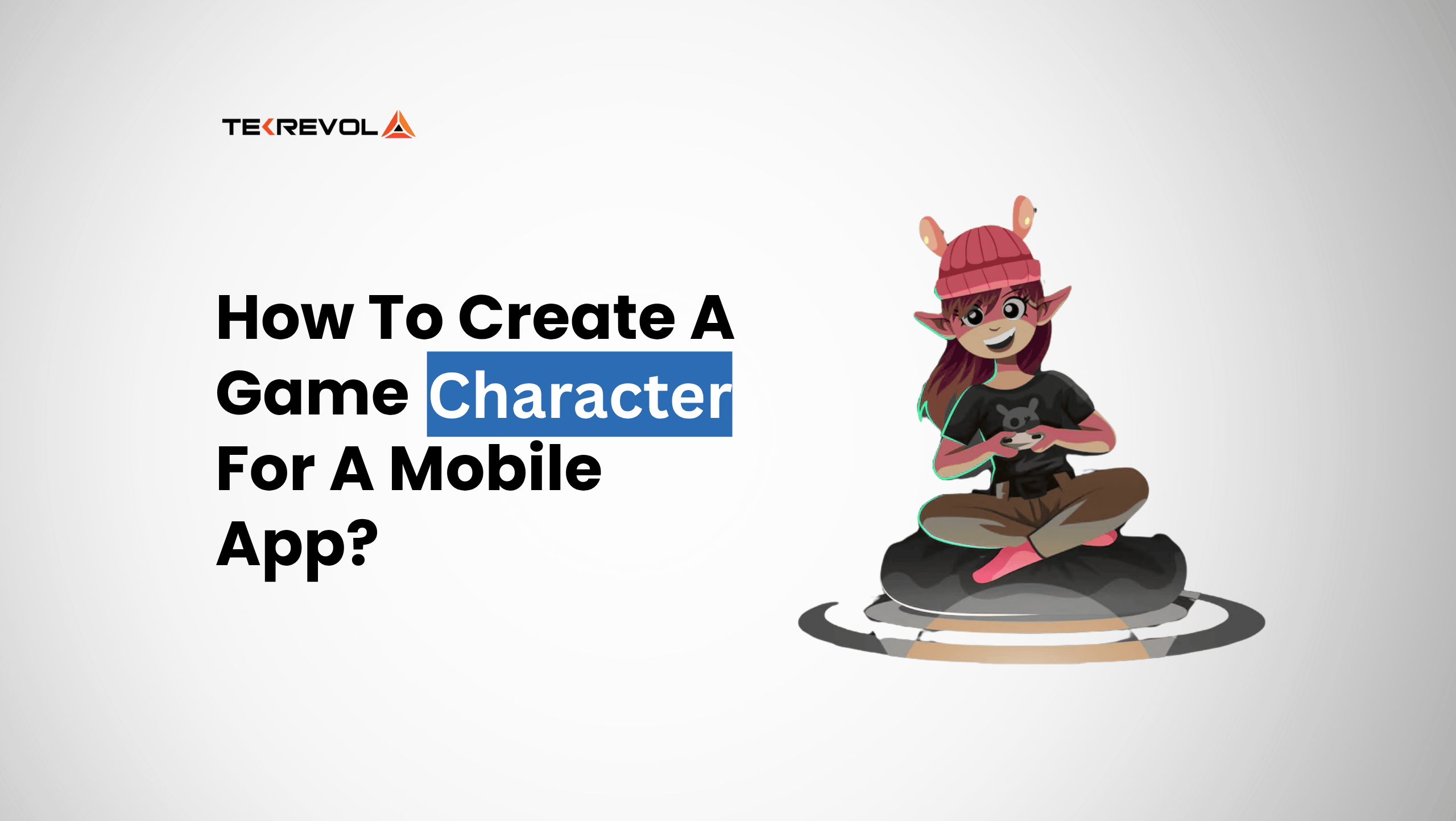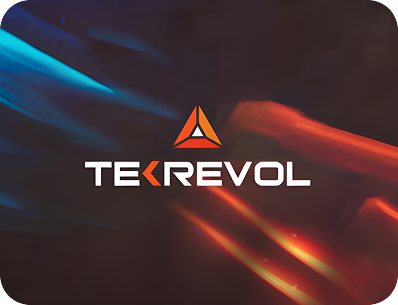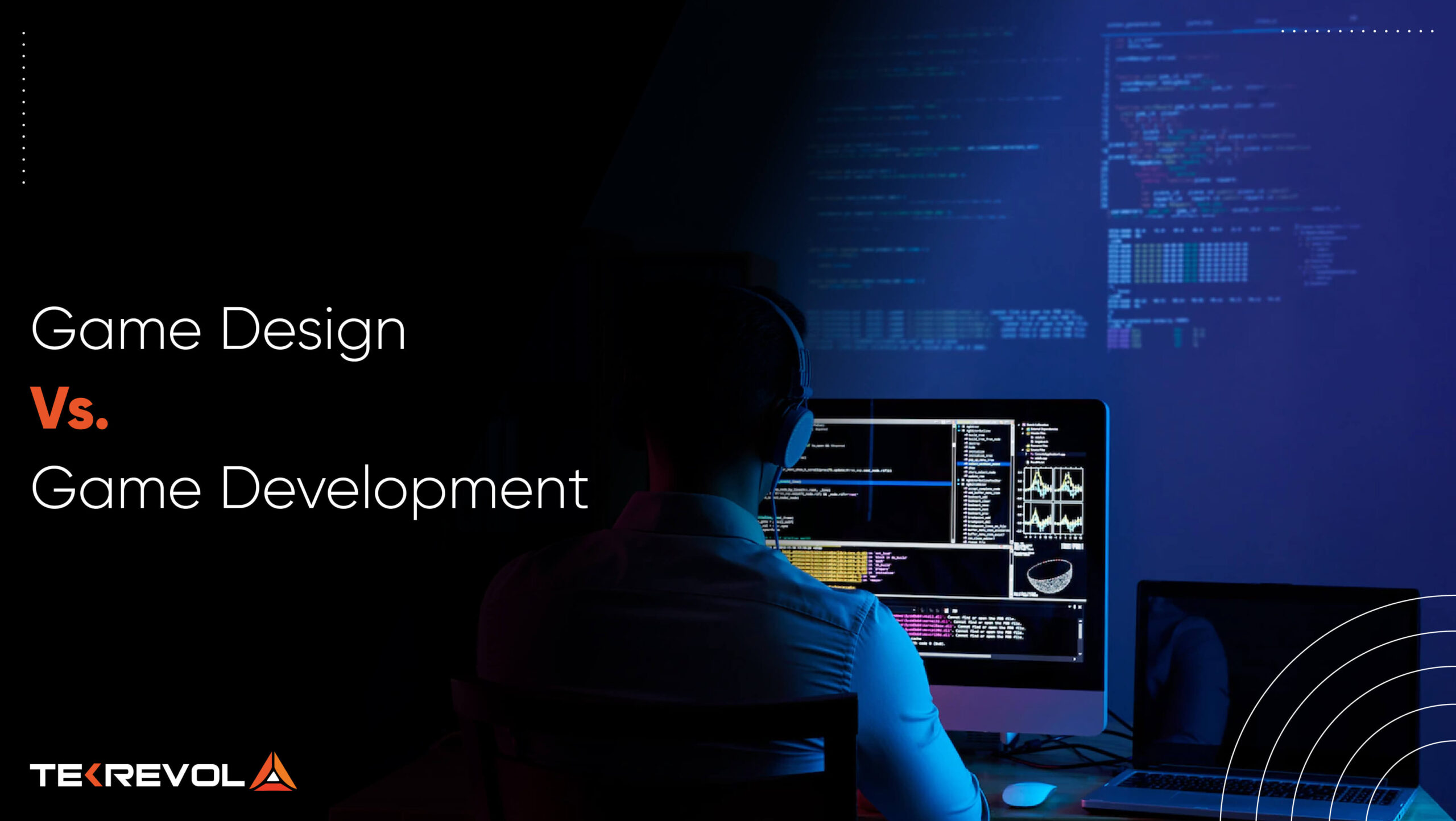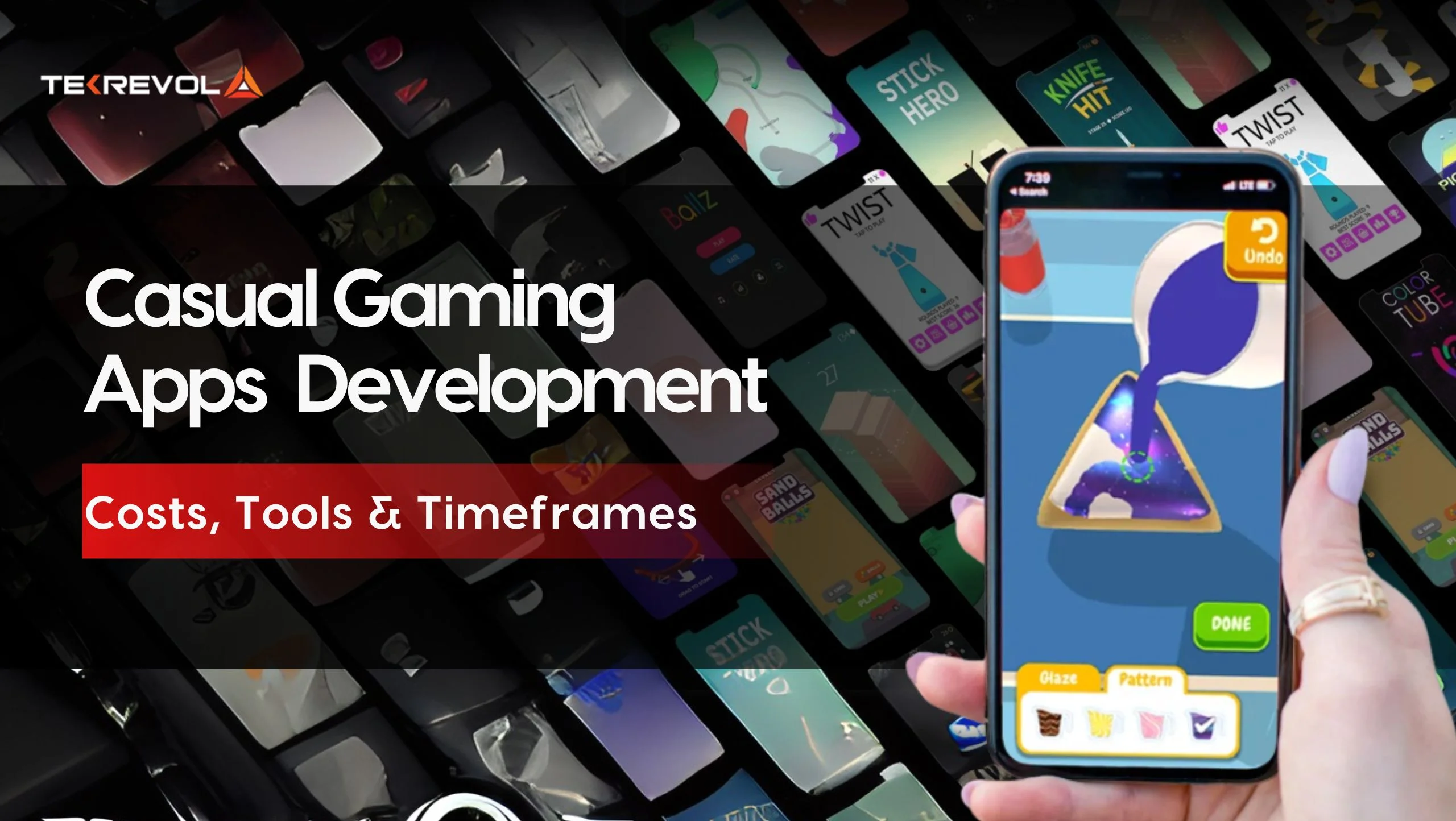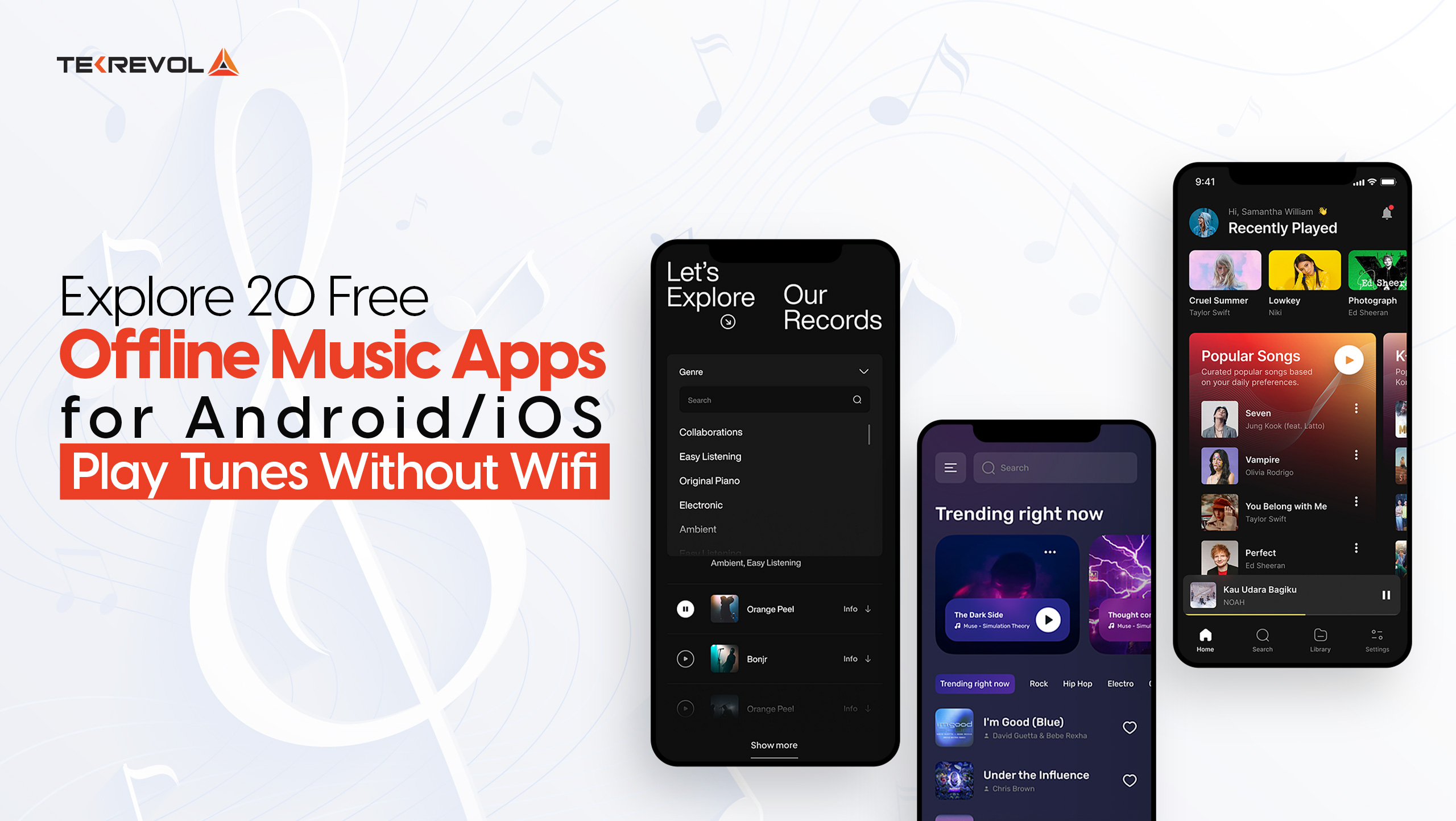Creating a memorable video game character design is more than just drawing a figure. It’s about shaping personality, emotion, and storytelling into a visual form that players instantly connect with. In game app development process, a strong character often becomes the face of the brand, driving engagement and loyalty.
Whether you’re exploring character game design for a casual mobile title or wondering how to make a video game character that feels lifelike, the process combines creativity, psychology, and technology. Today, even tools that offer a video game character design template or 2D game character design make it easier to experiment, but originality still matters most.
This guide walks you through the essential steps of crafting characters that don’t just exist in a game but resonate with audiences across platforms.
What Makes a Video Game Character Design Important?
Every great game starts with a story, but it’s the video game character design that really hooks players. A video game character isn’t just a digital avatar. It’s the face, voice, and personality that make the gameplay unforgettable.
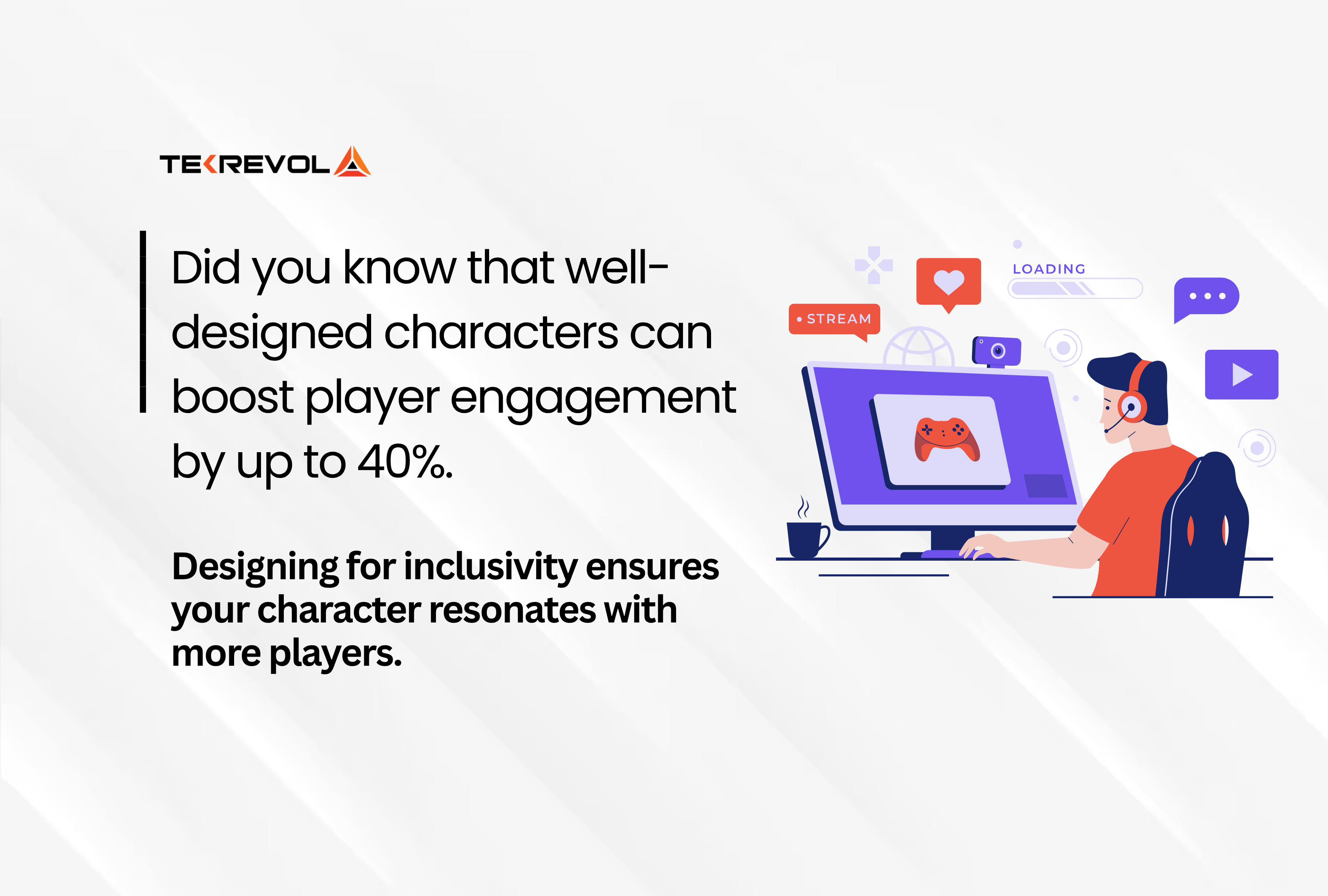
Strong character game design goes way beyond appearances. The best ones have backstories, quirks, and abilities that create emotional bonds with players. This connection is what keeps people coming back, whether they’re exploring open worlds or tapping away in mobile adventures.
According to a study paper on ResearchGate, character design is “crucial in capturing players’ attention and fostering emotional connections, conveying messages, and enhancing narrative storytelling.” Such an association is central to the speedy, competitive nature of mobile gaming.
Breaking Down the Importance of a Game Character in Mobile App Development
For mobile games, video game character design has extra challenges:
- Visual Clarity that pops on smaller screens
- Performance Optimization: textures and animations for smooth play
- Memorable looks that players instantly recognize
- Flexibility for use in icons, menus, or full 2D/3D models
Whether you start using a video game character design template or sketch your own video game character design ideas, the goal is always the same: create characters that feel alive and keep players hooked.
In the end, a video game character by an expert mobile app development company is an artfully crafted integration of art, storytelling, and technical effectiveness for a strong, lasting impression.
Why Is Strong Character Game Design So Critical to Mobile Apps?
In mobile gaming, video game character design isn’t just an artistic choice; it’s a business strategy. A strong character can transform a fun app into a global success by building emotional bonds, boosting retention, and shaping a game’s brand identity.
With the mobile gaming market expected to reach $126.1 billion by 2025, competition is fierce. A memorable video game character is often the very first hook that convinces players to download, stay engaged, and even spend money. And when studios budget their projects, they often weigh the importance of strong characters alongside game development cost to maximize impact.
The Function of Character Design in Encouraging Player Investment

- Emotional Connection: Players empathize and become attached to sympathetic characters.
- Identity and Projection: Characters act as avatars that enable players to project themselves into the experience.
- Narrative Anchor: They are the focal point of storytelling, offering the foundation for plot and immersion.
- Brand Recognition: Iconic characters become synonymous with the game, leading to loyalty.
- Monetization Opportunities: Characters are a big money source through in-app purchases for skins, power-ups, or new characters.

What are the Critical Steps to Design Compelling Video Game Characters?
Creating a video game character is a multi-stage journey from abstract concepts to a fully realized in-game asset. A structured approach systematically builds characters that resonate with players and enhance game app development.
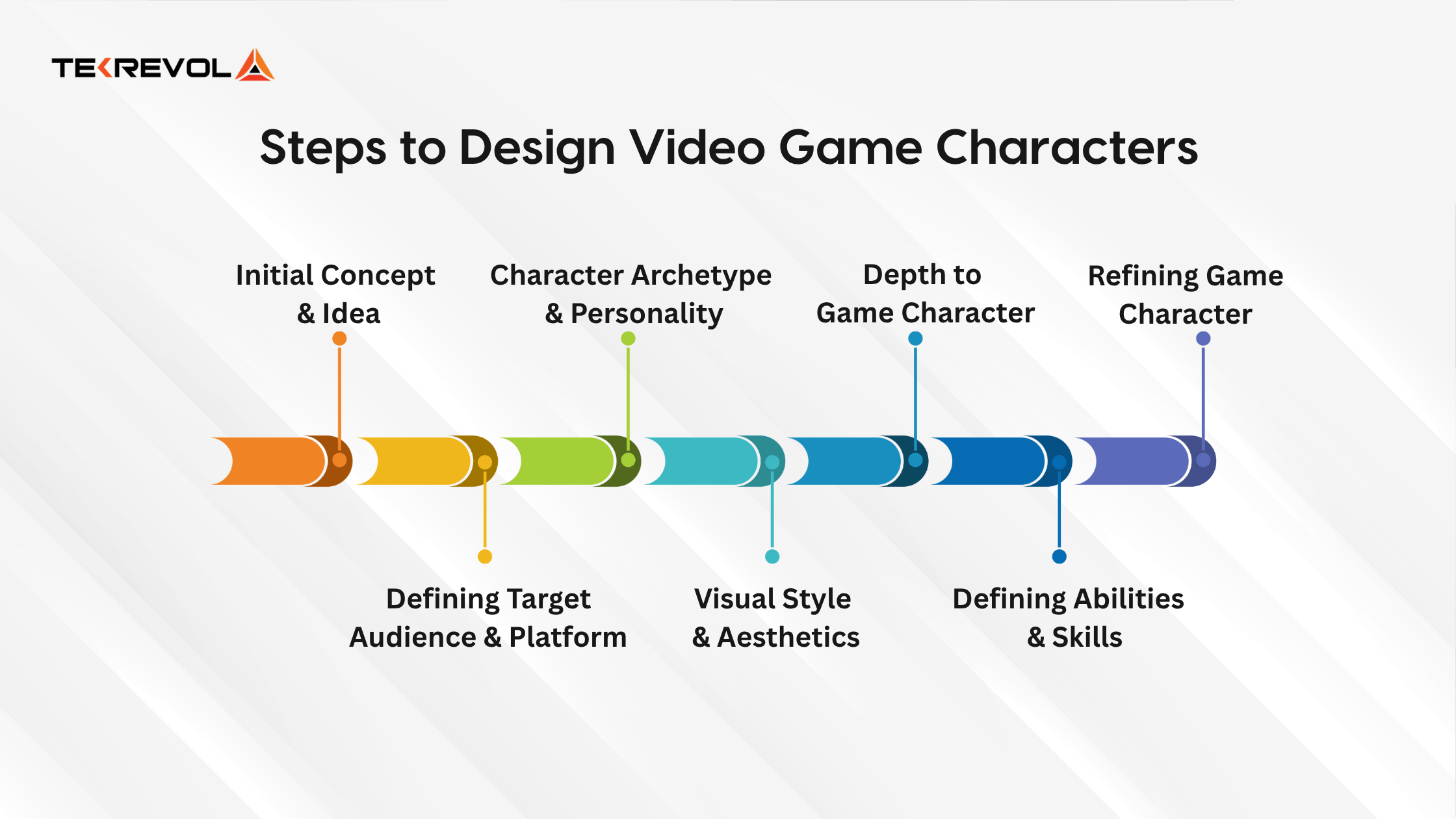
Here’s how to make a video game character for a mobile app:
1. Initial Conceptualization and Ideation
Creating a memorable video game character design for your mobile game always begins with a core idea that shapes their identity, ensuring it perfectly aligns with your game’s genre, theme, and overall vision.
This involves big-picture brainstorming, where you think about keywords that capture the desired feel, consider classic archetypes like a hero or villain with a fresh twist, and define the character’s specific role and gameplay function, whether they’re a player avatar or an enemy.
2. Defining the Target Audience and Platform
Understanding your target audience and the mobile platform is absolutely crucial for effective character game design, as these factors influence every choice you make about your character’s look and feel.
Character game design must adapt to the platform. For instance, a mobile character might need simpler visuals than those created for 2D game development services, where clarity is key, or 3D games, where detail and realism take center stage.
3. Developing Character Archetype and Personality
Beyond just their looks, a truly compelling video game character needs a distinct personality and an identifiable archetype to deeply connect with players, giving them depth and helping players quickly grasp their role and motivations.
You’ll choose a foundational archetype, then infuse it with unique personality traits like being brave or sarcastic, along with relatable motivations and flaws that create a sense of realism.
4. Establishing Visual Style and Aesthetics
The visual style and aesthetics are the most immediate and powerful aspects of video game character design, instantly influencing a player’s first impression and emotional connection.
This stage is all about transforming your character’s personality and role into tangible visual elements that are not only appealing but also perfectly consistent with your game’s overall art direction, ensuring a unified and immersive experience.
5. Giving Depth to Your Video Game Character
A captivating backstory and rich lore transform a mere visual design into a living, breathing video game character capable of truly engaging players emotionally.
Even with brief mobile game narratives, subtle hints about a character’s past or their place in the world significantly enhance player immersion and connection, explaining their personality, abilities, and motivations within the game’s universe.
6. Defining Abilities and Skills For Functional Game Design
Defining your video game character’s abilities and skills is a critical step in character game design, directly linking their appearance to how they function in gameplay. Clear animations and effects improve engagement, whether for 2D game character design or complex 3D game development.
This involves carefully balancing their core powers like movement, combat styles, or unique skills and planning how these will progress, all while ensuring they can be easily activated via touch controls with optimized animations and clear visual effects that provide instant player feedback.
7. Refining Your Video Game Character
Prototyping and iteration are indispensable stages in video game character design, converting static ideas into dynamic, testable assets that allow your game app development team to assess functionality and player experience in real-time.
This iterative cycle of creating a basic model with core animations, testing it in a simple environment, gathering feedback from playtesting (both internal and with target audiences), and then refining the design based on those insights is crucial.
What are the Critical Tools and Software for High-Quality Character Design?
Creating a video game character design demands strong software. The selection is art style, complexity, and pipeline-dependent, but there’s a shared set that underpins modern character creation.
To convert ideas into high-fidelity, high-performing mobile assets, mastering these tools, such as Unity development, is essential.
- 2D Concept Art & Illustration: Adobe Photoshop, Procreate (iPad), Clip Studio Paint for sketching initial video game character design ideas.
- 3D Modeling Tools: Autodesk Maya, Blender, and ZBrush are used for detailed character models and creating video game characters ready for animation.
- Texturing & Material Design: Substance Painter, Substance Designer, and Marmoset Toolbag give your characters depth, realism, and visual appeal.
- Rigging & Animation Tools: Autodesk Maya, Blender, Mixamo enable smooth movement and responsive in-game actions.
- Game Engines (for integration): Unity, or Unreal Engine, ensure your character works seamlessly in game app development and interacts perfectly with gameplay mechanics.

What are the Challenges in Character Game Design
Character game design brings special challenges, particularly for mobile. Defeating these is essential to providing a top-quality 2D video game character that enhances the mobile app experience.
Most of these difficulties are a result of reconciling artistic vision with pragmatic restrictions, especially mobile optimization.
| Challenge | Limitations | Strategy |
| 1. Mobile Performance | Lag/crashes on limited device power. | Optimize mobile game character assets: low poly, textures, skeletal animation. |
| 2. Small Screen Clarity | Details lost on tiny displays. | Focus character design on strong silhouettes, clear colors; test on devices. |
| 3. Market Uniqueness | Hard to stand out in the crowded mobile game market. | Unique video game characters: deep concept, blend elements, research competitors. |
| 4. Vision vs. Technical Limits | Grand artistic visions may be unfeasible for mobile. | Balance artistic vision with tech: communication, iterative development, smart compromises. |
| 5. Cross-Team Consistency | Maintaining style across multiple artists/teams. | Use clear art direction: briefs, reviews, version control. |
| 6. Player Retention | Keeping long-term player engagement. | Plan character progression, customization, new content for player retention. |
What are the Best Practices for Successful Video Game Character Design
Following best practices is important for great video game character design on mobile. These best practices make sure your video game character is aesthetically beautiful, functionally efficient, and emotionally immersive, raising the chances of influential characters and successful game app design.
- Prioritize Silhouette & Readability: Instantly recognizable outline, essential on small screens.
- Design for the Platform First: Optimize for mobile limitations first.
- Prioritize Expressiveness and Personality: Express emotion in design and subtle animation.
- Ensure Art Style Consistency: Be consistent with the game’s art direction as a whole.
- Embed Character within Gameplay: Design and capabilities should serve mechanics.
- Design for Customization and Monetization: Design for modularity where it applies.
- Iterate Heavily with Feedback: Lean into prototyping, playtesting, and ongoing iteration. As Shigeru Miyamoto points out, “It should be the experience that is touching. What I strive for is to make the person playing the game the director,” focusing on player-centered design.
- Accessibility and Inclusivity: Design for diversity, don’t use stereotypes for wider appeal.
How TekRevol Can Help
TekRevol is a specialist in customized software and mobile apps and provides a complete package of game development solutions. We know the intricacies of character game design for mobile, making your characters visually appealing, optimized in performance, scalability, and user engagement.
Our full-service approach, from strategic design and artistic greatness to mobile optimization and iterative refining, ensures your video game character designs are an effortless and effective extension of your mobile game. Work with TekRevol to create characters that aren’t merely in your game; they define it.


